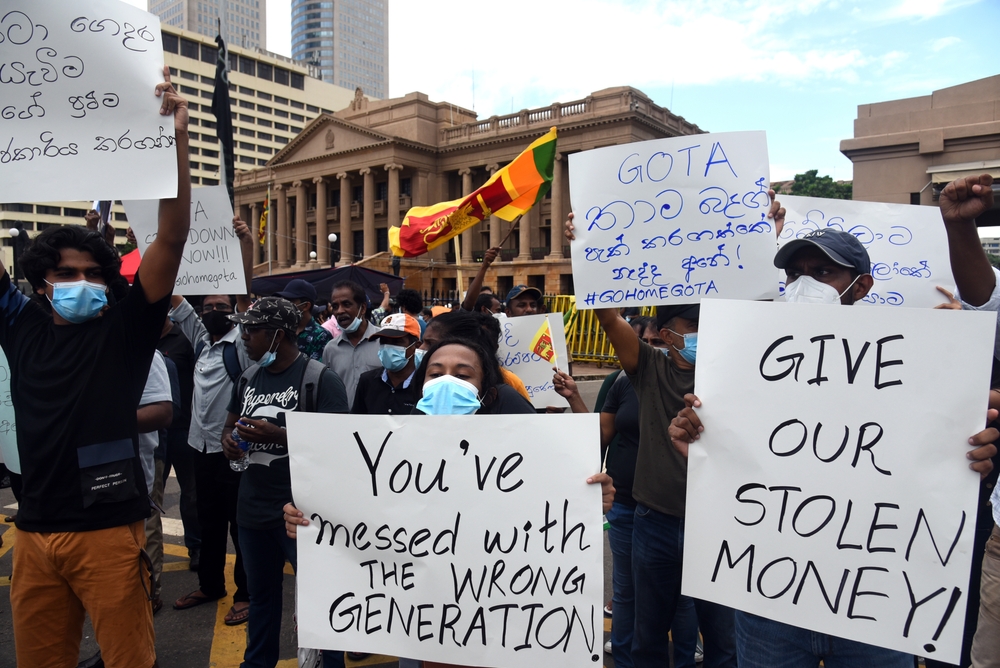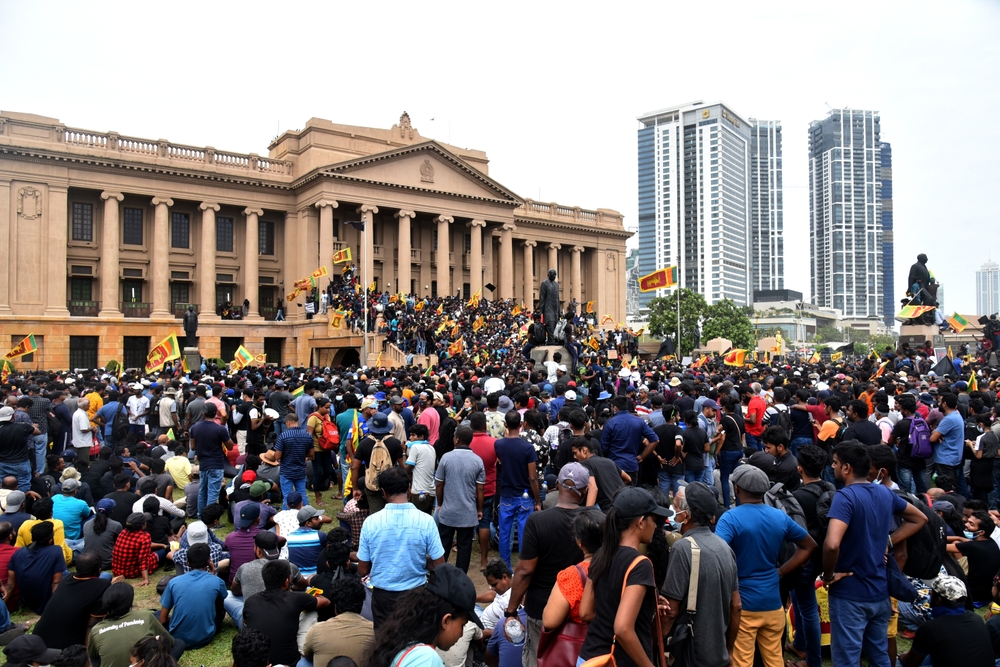Protesters occupying the head of the government’s residence. Skyrocketing inflation. Fuel prices more than doubling. Food and medicine shortages. The president of Asia’s oldest democracy flees the country and sends his resignation by email. What is going on in Sri Lanka?
* * *
Hopefully, you are watching the images from Sri Lanka and paying attention to the chaos rapidly unfolding there. The chaos in Sri Lanka is a sign of things to come.
In the second week of July, protesters stormed the offices of Sri Lanka’s prime minister, demanding the resignation of the country’s leading government officials. The protests began much earlier than this but only became a feature in the western media’s attention this month.
By July 13, the protesters were occupying the prime minister’s residence as the president fled the country. Sri Lanka’s President Gotabya Rajapaksa eventually submitted his letter of resignation by email. It was a dramatic ending to a political career from one of the families that have dominated Sri Lanka’s political system for decades. The notorious nepotism, corruption, and ineptness of the Rajapaksa dynasty is now the target of the protesters’ ire and blame, but there is more to the story.
Amid record inflations, supply shortages, and political upheaval, Sri Lanka is one of many nations around the world facing a perfect storm of crises that the pandemic lockdowns sent into overdrive.
The current status of the crisis would not have occurred without the lockdowns but is not solely the result of the pandemic or the lockdown. Ridiculous economic policies from the Rajapaksa government and new agricultural laws that paralyzed the agricultural industry also played a prominent role in shaping the current crisis. Then came the Russian invasion of Ukraine that sent global food and energy prices soaring.
- Here Is How Sri Lanka Reached This Moment of Crisis (New York Times)
Rajapaksa approached the International Monetary Fund (IMF) for a bailout in June. He sought help from Russia to lower energy prices in May. All to no avail. As the economy collapsed, schools and offices shut down, and Rajapaksa called on Sri Lanka’s citizenry to grow their own food at home.
In the post-war years, Sri Lanka built up a massive national debt to finance its military, social welfare systems, and elaborate construction projects. When economic growth began to slow, the government pursued further debt simply to make their payments on their already established debts. That Ponzi scheme logic approach to the national debt was at critical levels before the pandemic. Things exploded after that.
Nearly 12% of the nation’s economy is dependent upon tourism. The lockdowns beginning in 2020 erased this from Sri Lanka’s GDP. The government started printing new money to combat the economic meltdown, which triggered rampant inflation. By the end of 2021, Sri Lanka’s government was appealing to its regional neighbors for emergency debt relief so the country could purchase diesel fuel and milk powder.
As if to pour salt on the economic wounds already showing signs of a rampantly spreading disease, the government banned all agricultural fertilizers in April 2021 in a dismally failing move to convert the agricultural system to strictly organic crops. The ban was lifted after seven months but not before it crippled the country’s agricultural industry.

Meanwhile, the government began rationing fuel and electrical power to the populace. This spring, Sri Lanka suspended payments on its international debt. They could no longer afford to pay, and the country was hurled into the abyss of economic collapse. At the end of April, Sri Lanka’s rupee was the world’s worst-performing currency.
Even if the people of Sri Lanka could afford the massive inflationary prices plaguing the country, supplies were running out. By the end of spring this year, shortages in food, fuel, and basic supplies triggered a new level of panic and chaos in the streets.
Amid the power rationing, the government issued a stay-at-home order to conserve fuel. In other words, even if people could work, they were told not to work. While the economy was already nearing collapse, this final straw meant the political collapse was inevitable.
That is when the Sri Lankan people took to the streets.
- Sri Lanka – Why A Feudal Culture and Absence of Meritocracy Bankrupted A Nation – (Interpress Service)
Following the election of a new president, Ranil Wickremesinghe, this week, protesters refused to go home. Wickremesinghe has served as prime minister of Sri Lanka six times. Protesters see him as part of the same system that has brought the country to the brink of ruin.
Don’t be fooled by the narratives out there regarding Sri Lanka. Sri Lanka is not a story of mere corruption and mismanagement. It is the story of national corruption and mismanagement that has collided with a growing roster of unprecedented global crises.
This is important because Sri Lanka is not alone. Across the globe, many nations are encountering an untenable strain as pandemics, an economic downturn, and food shortages push them toward the edge. The foundations were already weak. Now they are being exposed.
In March, Marcell Estevao warned in an article on the World Bank website that as many as a dozen countries could prove unable to service their debt. The world’s poorest countries, many plagued with corruption and mismanagement, took on enormous amounts of debt in the last decade. The once in a generation chaos of the last two years is now morphing into a new disaster.

